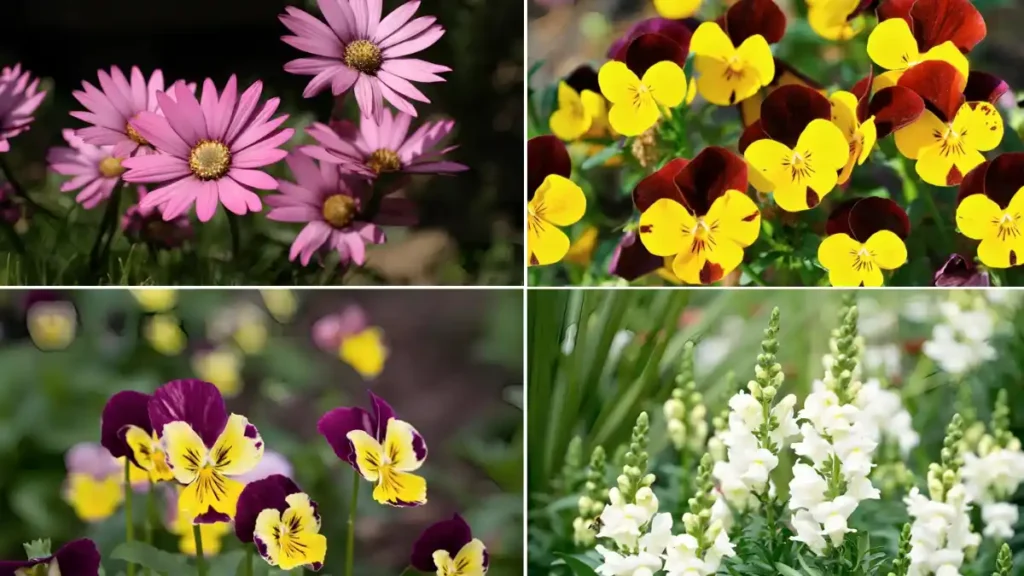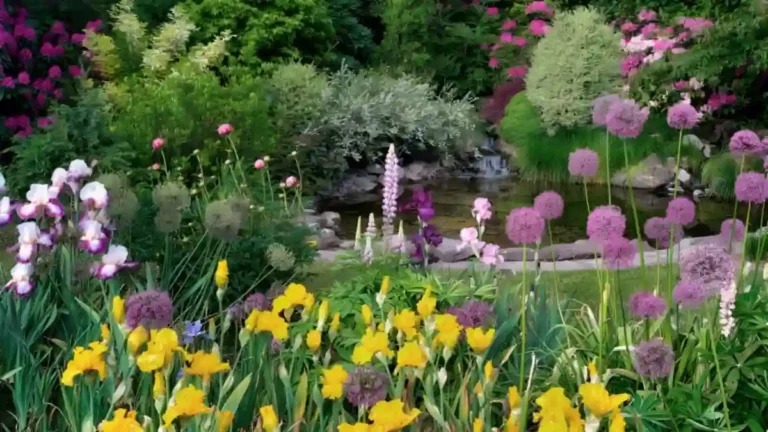Flowers to plant in October will make your landscape look beautiful in the coming months. Many hardy kinds flourish as the weather cools, enlivening the environment with brilliant hues. Fall planting ensures a beautiful spring display by allowing bulbs such as tulips, daffodils, and crocuses to form sturdy roots before winter. Furthermore, even as the temperature drops, annuals for the cool season like pansies and snapdragons can still produce cheery blossoms. The following list of the top six flowers to plant in October will help you either add seasonal beauty or get ready for springtime blossoms.
What flowers to plant in October:
1. Pansies
Because of their hardiness and bright flowers, pansies are one of the most widely used plant varieties for autumn planting. These resilient flowers are ideal for adding pops of color to your garden beds and containers because they come in a variety of hues. Pansies thrive in lower weather and can even survive frost, making them excellent for October planting. Select a location with partial sunlight and well-draining soil for the greatest results.
2. Chrysanthemums (Mums)
Mums, often known as chrysanthemums, are the traditional fall flower. Their blooms, which capture the warm tones of fall, come in a variety of tints of yellow, orange, red, and purple. Hardy perennials and mums may withstand multiple growing seasons when planted in well-draining soil with sufficient sunlight. Planting them in October guarantees a stunning display the following year by allowing them to grow roots before winter.
3. Asters
When looking to extend the flowering season into late fall, asters are an excellent alternative. The vivid blossoms of these perennial flowers come in pink, purple, blue, and white hues. Asters are a great addition to any garden because they grow best in full sun and well-drained soil. Planting them in October will allow them to put down deep roots and produce beautiful late-season color.
4. Violas
Like pansies, violas are tiny, vivid flowers with many blooms. They can withstand even the harshest winters because they are incredibly resilient. Since violas bring a wonderful pop of color to your garden throughout the fall and into the spring, they are ideal for planting in October. These flowers are adaptable to a variety of garden conditions since they like soil that drains well and partial shade.
5. Snapdragons
Snapdragons, annuals with tall spikes and unique flower shapes, are ideal for chilly climates and fall air. They can bloom earlier in spring when planted in October, offering various color and height options, and prefer full light and well-drained soil.

6. Ornamental cabbage and kale
Even though they are not flowers, ornamental kale and cabbage provide gardens a special beauty in the winter and fall. Their vivid purple, pink, and green foliage makes a striking show, particularly in the winter. These are great plants to plant in October since they can tolerate frost and grow well in lower climates. They thrive in full sun to light shade and well-drained soil.
Tips for flowers to plant in october:
- Soil Preparation: To enhance soil structure and fertility, make sure your plant bed is adequately prepared by adding organic matter.
- Watering: Newly planted flowers still need regular watering to form strong roots, even in the cooler temperatures.
- Mulching: A layer of mulch applied to the soil can help keep it moist and shield plant roots from sharp temperature changes.
- Location: Considering each species of flower’s requirements for moisture and sunlight, choose the best position for them.
Conclusion:
Flowers to plant in October may not be the first thing on a gardener’s mind, but they can produce stunning results. These six flowers, which range from cheery pansies to resilient chrysanthemums, can not only make your garden seem lovely but also produce a colorful scene that will continue well into the fall and winter. So gather your gardening supplies and plant these pretty flowers to make the most of this autumnal season!
Certainly! If you’d like to learn more, please consider following our WhatsApp Channel: Harvest Gardening
A frequently asked questions:
Q1: What flowers to plant in october in southern california?
A1: October is a perfect time to plant cool-season flowers in Southern California, such as snapdragons, violas, and pansies. These flowers will bloom all winter and spring since they love the moderate fall weather.
Q2: What flowers to plant in october UK?
A2: October is a great month to plant hardy perennials like hellebores and crocuses, as well as spring-flowering bulbs like tulips and daffodils in the UK. These will have gorgeous springtime blooms.
Q3: What flowers to plant in october in arizona?
A3: Cool-season flowers like pansies, snapdragons, and calendulas grow well in Arizona’s mild fall weather, so October is a terrific time to plant them. The cooler months will bring color with these flowers.
Q4: What flowers to plant in october zone 9?
A4: Plant cool-season flowers (calendulas, snapdragons, and pansies) in October in Zone 9. The region’s mild fall and winter weather is ideal for these flowers.



